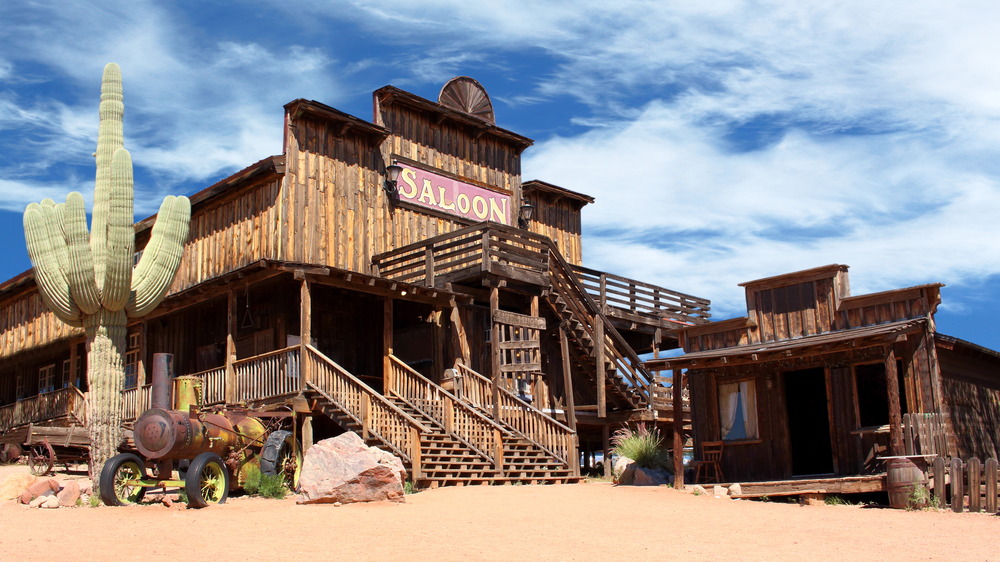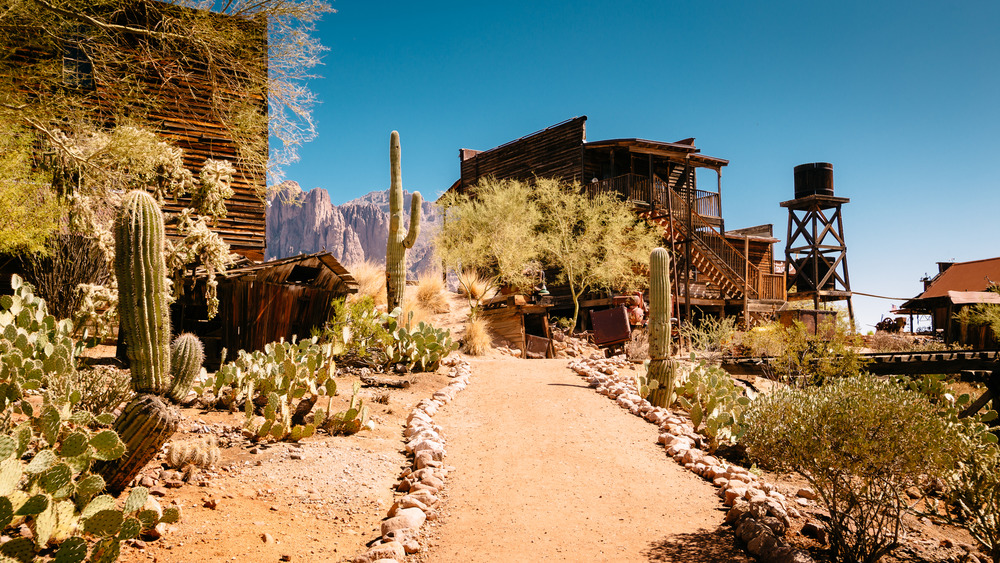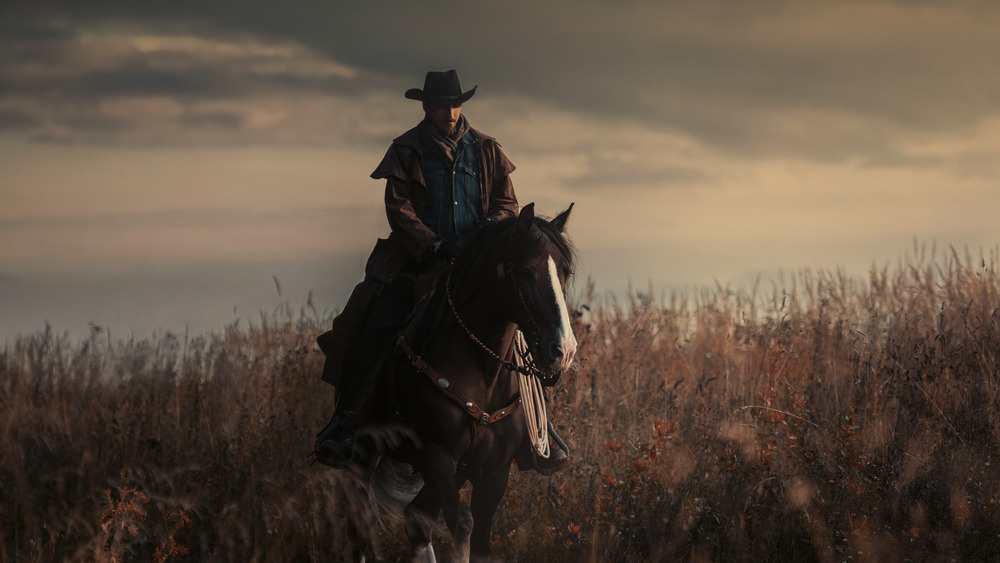The Truth About Life In Old West Railroad Towns
With westward expansion also came the introduction of the Transcontinental Railroad in 1830. This connection of rails heading from east to west would help build modern America. And during the Old West era from 1850-1910, the country saw the formation of a lot of new towns along rail lines as a result.
The farther west these rails continued to expand, the more rail stations and nearby towns popped up. Many men and women were lured west for the chances of opportunity and for jobs in rail construction or mining. Once there, they started setting up shop. The California Gold Rush in 1849 had already started attracting new arrivals, and so did the demand for more settlements. The rush drew 300,000 people out west throughout its duration.
Once deserted areas in states like the Dakotas, Idaho, Montana, Arizona, Nevada, Oregon, Utah, New Mexico, Colorado, and California, now needed to support an influx of newcomers.
Rail town staples
Rail companies wanted to span as far west as quickly as they could, and some were in competition with each other. As tracks were rapidly being laid, so were people to follow. Unlike major cities that had dedicated city planning layouts, rail towns were informal settlements that grew over time.
Other than being a train stop, rail towns had to accommodate and support its locals and migrants. In a typical rail town, one could find a bank, taverns (or saloons), several hotels or inns, a post office, and a jailhouse. These towns kept seeing a rise in population, so they also needed the means to keep up. Soon businesses like apothecaries (known today as drugstores), a blacksmith, and a telegraph office were commonly found. The need for these businesses meant rail towns saw a lot of economic growth, and people were needed to run them.
For some fun, locals could visit dance halls, gambling houses, or see a theater show. People like Buffalo Bill earned their fame by providing entertainment during this era.
The West wasn't Wild
Thanks to decades of Hollywood cowboy depictions and modern video games, many stereotype life in the Old West as an era of rampant gun slinging, duels, and lawlessness. But in actuality, the so-called "Wild" West didn't really deal with a lot of recurrent wrongdoing or violence. Sure outlaws like Butch Cassidy were real and there was crime that happened, according to some historians like Larry Schweikart, what we think we know of that period is a little exaggerated. Apparently, bank robberies weren't as easy or as common, and modern bank laws were shaped by regulations implemented during this era.
Many of these Old West rail towns became major or important cities — most notably places like Salt Lake City and Las Vegas. Other places became ghost towns when some rails of the Transcontinental Railroad went defunct, per Abandoned Rails. The rail still rolls cross-country — albeit not the same — but without the existence of it and the towns it helped create, we would not have some of the Western U.S. cities we have today.


